
NGC 7001 is an intermediate spiral galaxy located about 300 million light-years away in the constellation Aquarius. NGC 7001 has an estimated diameter of 106,000 light-years. It was discovered by English astronomer John Herschel on July 21, 1827 and was also observed by Austrian astronomer Rudolf Spitaler on September 26, 1891.

NGC 7002 is a large elliptical galaxy around 320 million light-years away from Earth in the constellation of Indus. The galaxy was discovered by English astronomer John Herschel on September 30, 1834. NGC 7002 is also part of a group of galaxies that contains the nearby galaxy NGC 7004.
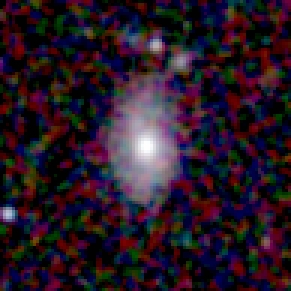
NGC 7301 is a barred spiral galaxy located around 308,000,000 light-years (94,000,000 pc) away from Earth in the constellation Aquarius. It was discovered by American astronomer Francis Preserved Leavenworth In 1886.

NGC 7303 is a barred spiral galaxy around 170 million light-years from Earth in the constellation Pegasus. NGC 7303 was discovered by astronomer John Herschel on September 15, 1828.
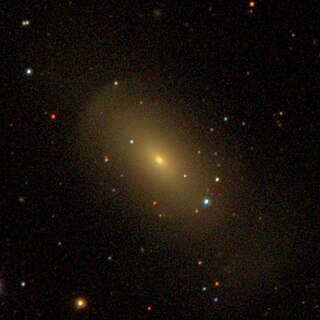
NGC 7010 is a massive elliptical galaxy located about 365 million light-years from Earth in the constellation Aquarius. NGC 7010 was discovered by astronomer John Herschel on August 6, 1823, and was later listed by French astronomer Guillaume Bigourdan as IC 5082.

NGC 7012 is a large, bright elliptical galaxy located about 380 million light-years away from Earth in the constellation Microscopium. NGC 7012 was discovered by astronomer John Herschel on July 1, 1834.

NGC 463 is a lenticular galaxy located about 264 million light-years away from Earth in the constellation Pisces. It was discovered by French astronomer Édouard Stephan on December 16, 1871.

NGC 466 is a lenticular galaxy located about 227 million light-years away from Earth in the constellation Tucana. NGC 466 was discovered by astronomer John Herschel on October 3, 1836.
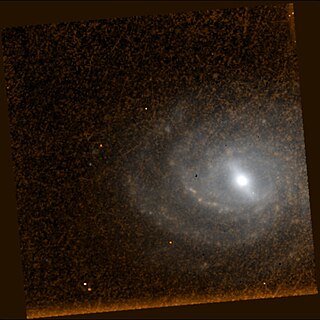
NGC 491 is a barred spiral galaxy located about 161 million light-years away from Earth, in the constellation Sculptor. NGC 491 was discovered by astronomer John Herschel on September 25, 1834.
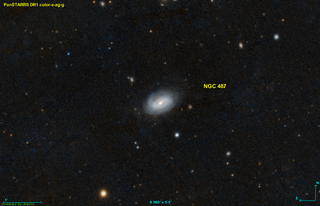
NGC 487 is a barred spiral galaxy located about 250 million light-years away from Earth in the constellation Cetus. NGC 487's calculated velocity is 5949 km/s. NGC 487 was discovered by American astronomer Francis Leavenworth on November 28, 1885.
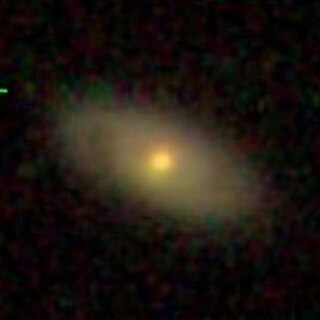
NGC 480 is a spiral galaxy located about 546 million light-years away from Earth in the constellation Cetus. NGC 480 was discovered by American astronomer Francis Leavenworth In 1886.
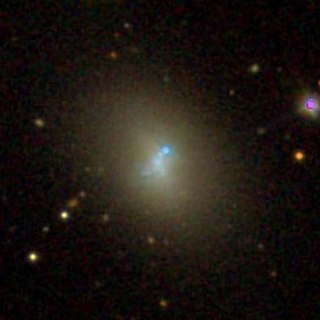
NGC 7077 is a lenticular blue compact dwarf galaxy located about 56 million light-years away from Earth in the constellation Aquarius. Discovered by astronomer Albert Marth on August 11, 1863, the galaxy lies within the Local Void.
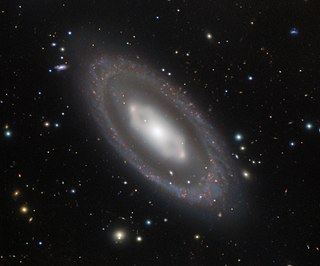
NGC 7020 is a barred lenticular galaxy located about 140 million light-years away in the constellation Pavo. NGC 7020 was discovered by astronomer John Herschel on August 31, 1836.
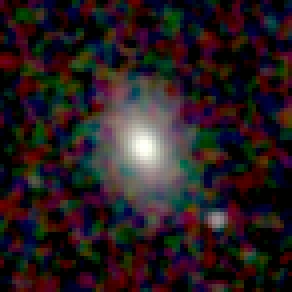
NGC 7033 is a lenticular galaxy located about 390 million light-years away in the constellation of Pegasus. It is part of a pair of galaxies that contains the nearby galaxy NGC 7034. NGC 7033 was discovered by astronomer Albert Marth on September 17, 1863.

NGC 7035 and NGC 7035A are a pair of interacting lenticular galaxies located around 400 to 430 million light-years away in the constellation of Capricornus. The main galaxy, NGC 7035 was discovered by astronomer Frank Muller in 1886.
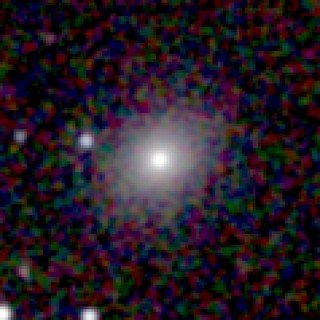
NGC 7057 is an elliptical galaxy located about 230 million light-years away in the constellation of Microscopium. NGC 7057 was discovered by astronomer John Herschel on September 2, 1836.

NGC 7080 is a barred spiral galaxy located about 204.5 million light-years away in the constellation of Vulpecula. It has an estimated diameter of about 100,000 light-years which would make it similar in size to the Milky Way. NGC 7080 was discovered by astronomer Albert Marth on September 6, 1863.
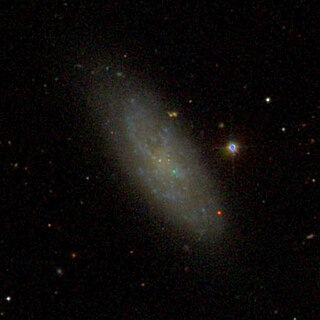
NGC 4633 is a spiral galaxy located about 70 million light-years away in the constellation of Coma Berenices. It is interacting with the nearby galaxy NGC 4634. NGC 4633 was discovered by astronomer Edward D. Swift on April 27, 1887. It was rediscovered on November 23, 1900, by astronomer Arnold Schwassmann and was later listed as IC 3688. NGC 4633 is a member of the Virgo Cluster.
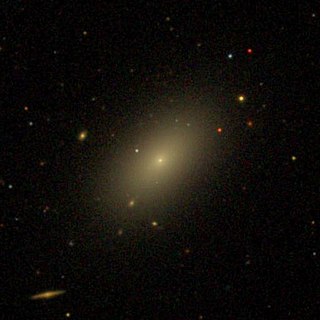
NGC 4482 is a dwarf elliptical galaxy located about 60 million light-years away in the constellation Virgo. NGC 4482 was discovered by astronomer William Herschel on March 15, 1784. It was rediscovered by astronomer Arnold Schwassmann on September 6, 1900 and was listed as IC 3427. It is a member of the Virgo Cluster.

NGC 4497 is a lenticular galaxy located about 60 million light-years away in the constellation Virgo. NGC 4497 was discovered by astronomer William Herschel on March 15, 1784. It was rediscovered by astronomer Arnold Schwassmann on November 8, 1900 and was listed as IC 3452. NGC 4497 is a member of the Virgo Cluster.




















